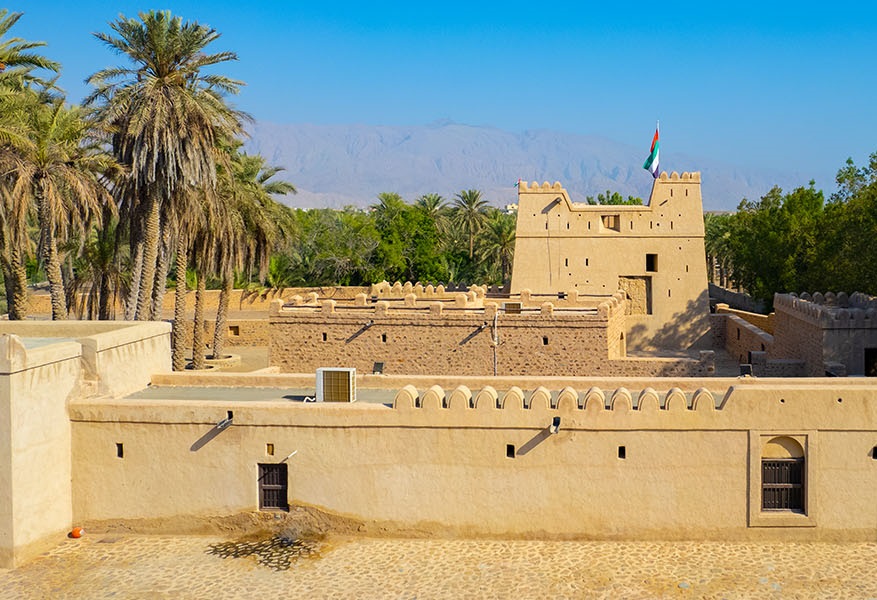
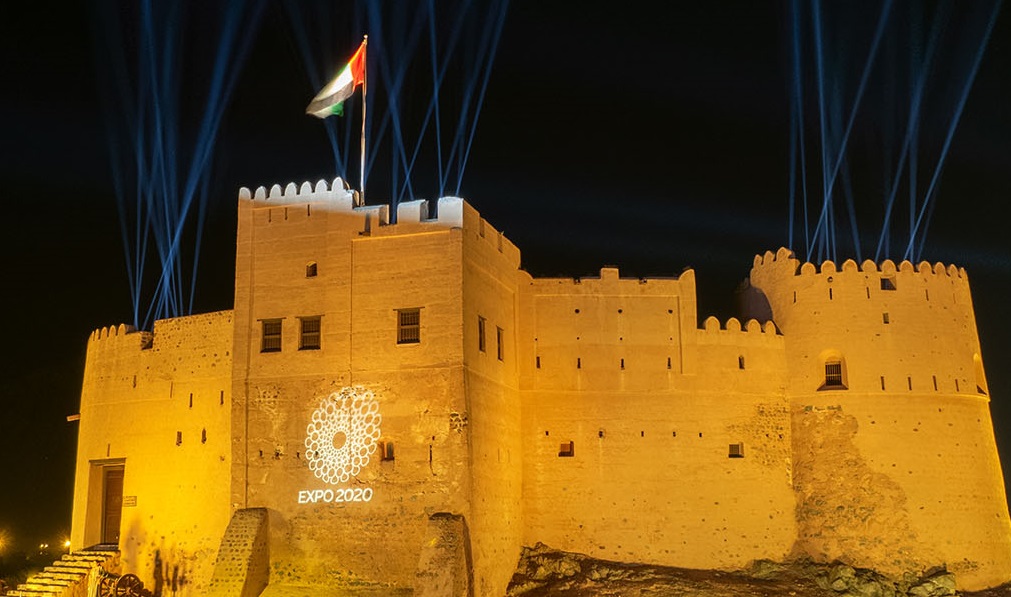
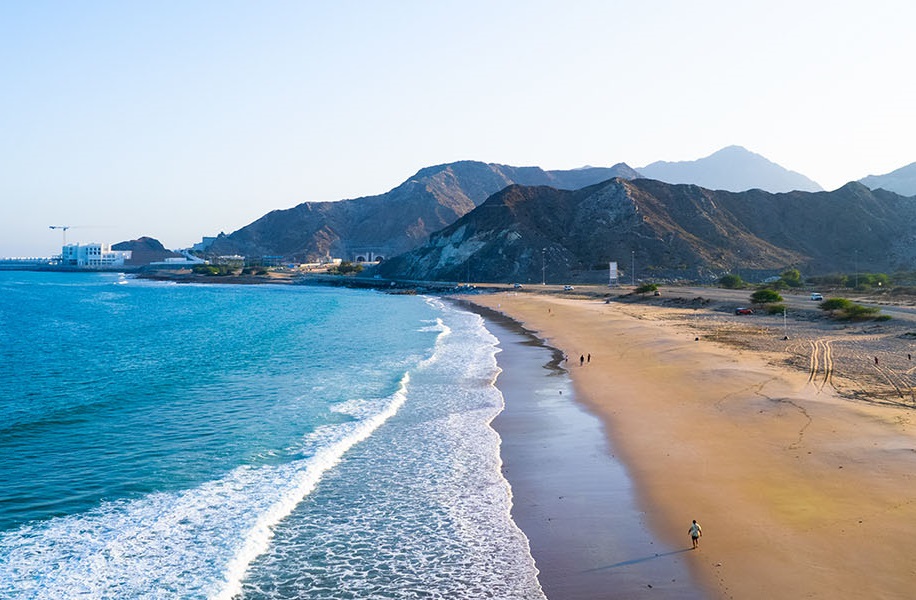
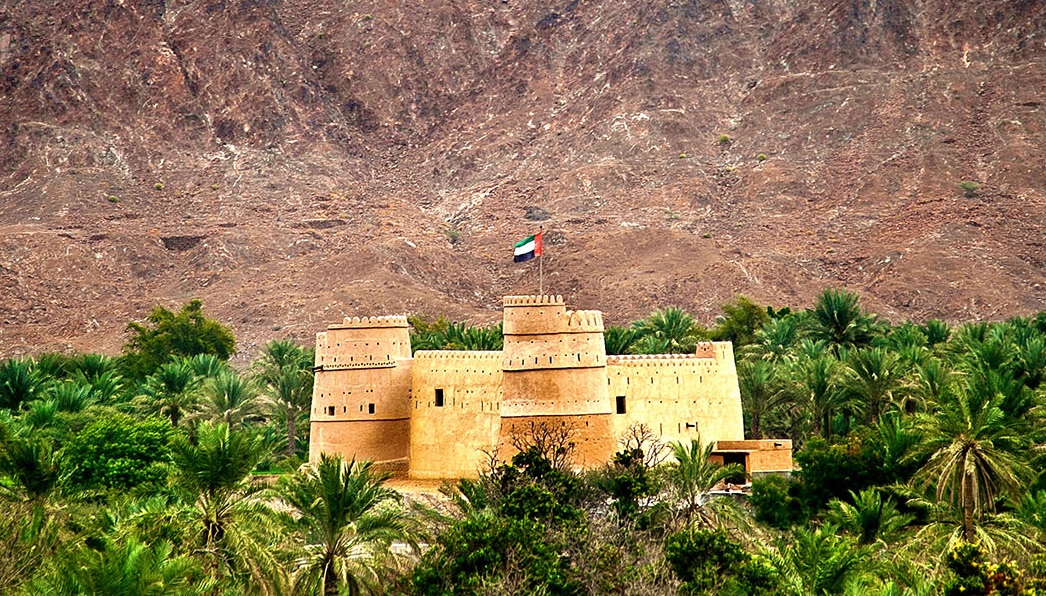
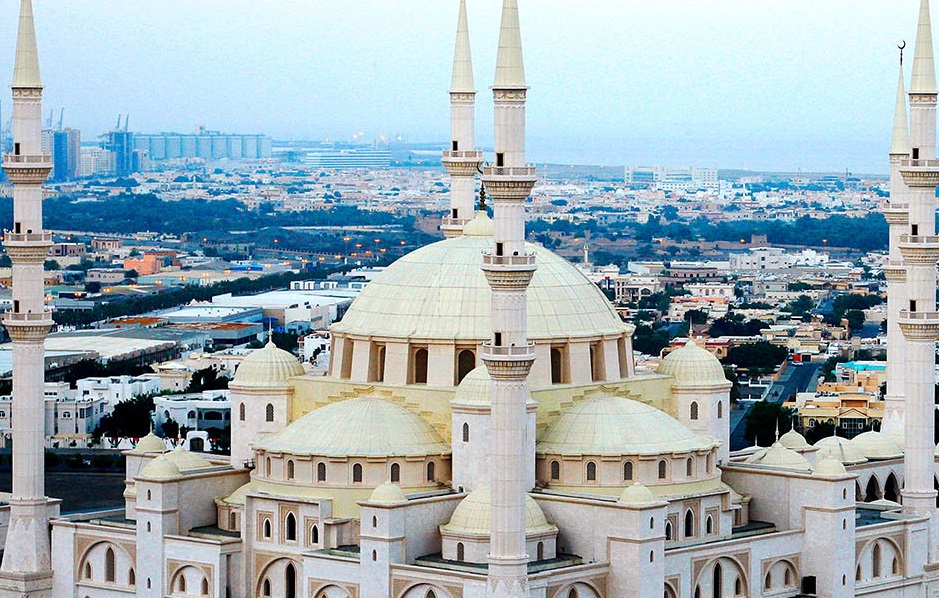
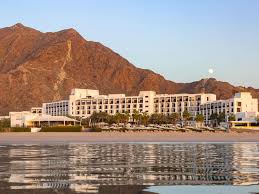
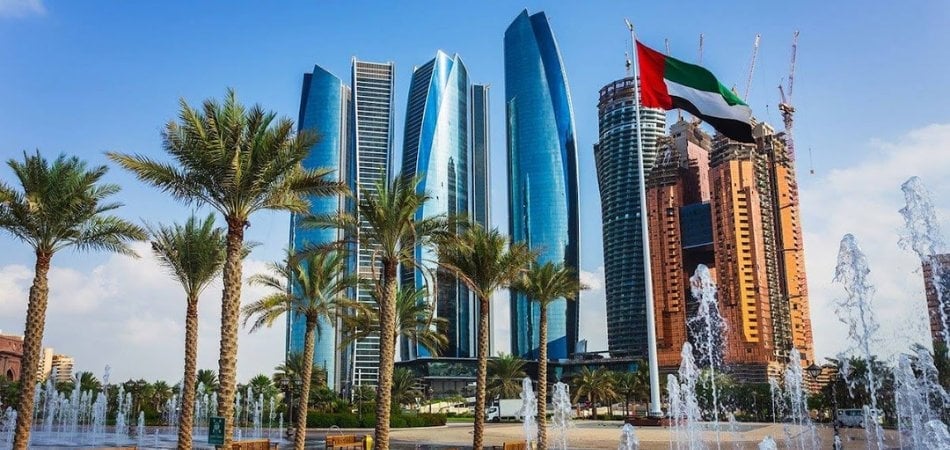
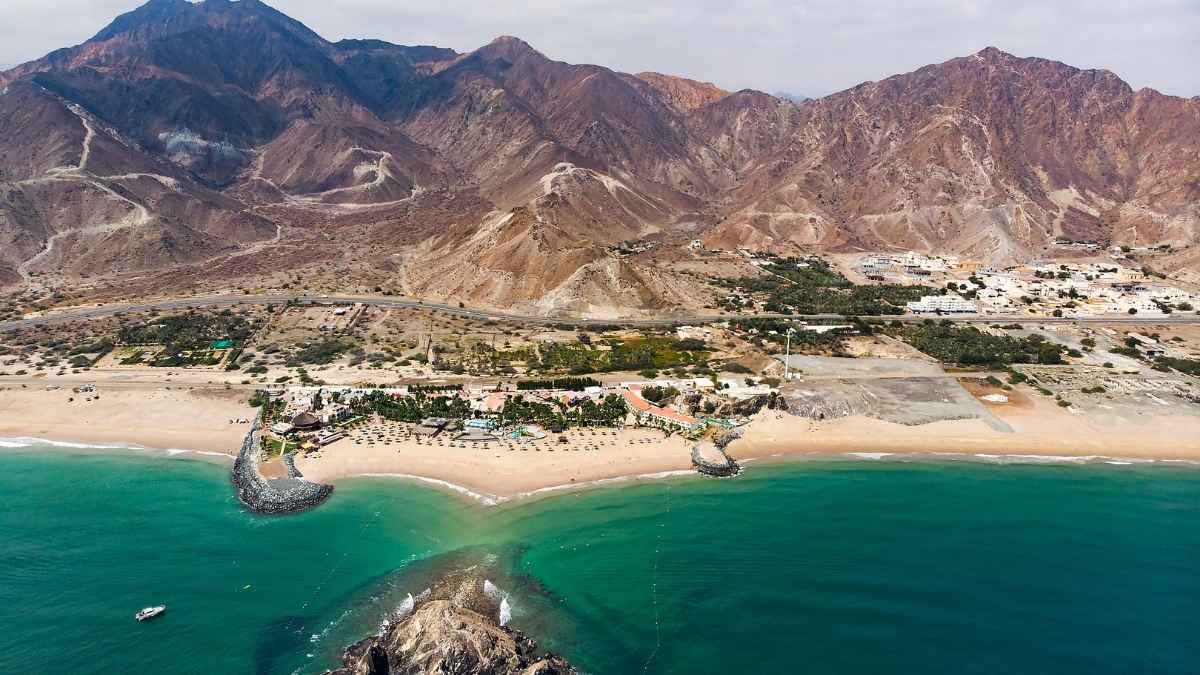
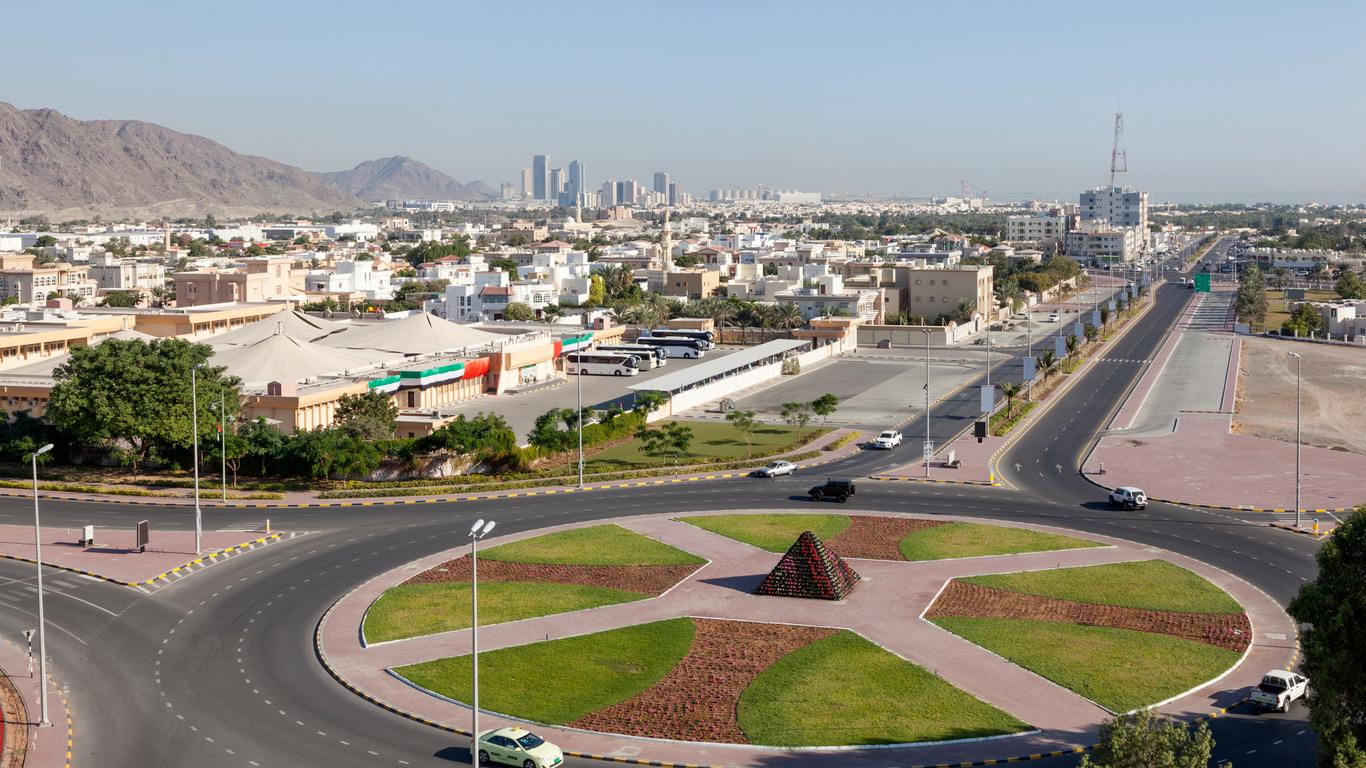
Fujairah is the only emirate that is located completely on the eastern coast of the UAE along the Gulf of Oman. The shores of Fujairah extend along the Gulf of Oman for about 70km. from the city of Fujairah in the south to the town of Dibba in the far north. The total area of the emirate of Fujairah is 1,580 sq. km.
Population
Population of Fujairah reached 314,829 in mid-2024.
Location & Geography
It shares its boundaries with the emirates of Sharjah and Ras Al Khaimah on the west and the emirate of Sharjah to the south. On the north, it shares its international border with the Sultanate of Oman.
Economy
The GDP of Fujairah reached 22 billion AED for the year 2021. Fujairah’s economy is based on fishing and agriculture. Its land is irrigated by rainwater from the Hajjar mountains.
Due to its strategic position, it is the UAE’s only access to the Indian Ocean. It operates a multipurpose port that offers access to major shipping routes of the world making it home to the world’s largest livestock shipping companies.
Other local industries include mining and stone crushing which have benefited from the recent boom in construction in Dubai and Abu Dhabi.
The Fujairah Free Zone, surrounding the port of Fujairah, promotes foreign investment in banking and trade. The emirate’s GPD reached AED 29,130 million in 2024.
In 2015, Fujairah launched ‘Fujairah Plan 2040′. The plan includes the development of Fujairah port by adding new terminals for oil, marine services, dry bulk and containers with an anchorage area, along with the expansion of Fujairah airport apron and runway and the relocation of the cargo terminal and airport.
Touristic Attractions
Fujairah is distinguished with its rugged mountains, valleys, waterfalls, oases and wide sandy beaches. It has several hot, cold and mineral springs.
Because of its easterly location, Fujairah’s climate is more moderate than that of Abu Dhabi and Dubai. Weekend visitors looking to escape the heat are drawn to Fujairah’s relaxed and peaceful atmosphere.
Wadi Al Wurayah waterfalls and Ain Al Madhab Gardens are major touristic attractions. And so are the historic Al Bidya Mosque and the Heritage Village.
The Ruling Family
Fujairah’s modern history began in 1808 when Sheikh Mohammed bin Mattar, leader of the Al Sharqi tribe built his castle and the old city surrounding it. The current Ruler of Fujairah is H. H. Sheikh Hamad bin Mohammed Al Sharqi.
Facts to Follow
Apart from the spectacular scenic beauty that it is endowed with, there are many lesser-known facts about Fujairah that lend the Emirate a unique charm worth discovering at your own pace.
- Fujairah’s 70km Indian Ocean coastline has some of the country’s best beaches, popular for numerous water sports and deep-sea adventures
- The Emirate is home to the oldest existing mosque in the UAE
- Fujairah Fort, constructed between 1500 and 1550 and rebuilt between 1650 and 1700, is considered to be the UAE’s oldest fort, and functions as a residence for the ruling family.
- 500 Bronze Age artefacts were discovered at an ancient burial ground in Dibba, a town in Fujairah
- Wadi Wurayah in Fujairah is a UNESCO Biosphere Reserve that has some of the country’s rarest plants and animals
- Bull fighting is a major event in Fujairah every Friday that has been an integral part of the traditional sports and local culture from a very long time
- The Fujairah Port is the only multi-purpose port on the east coast of the UAE, which ranks as one of the three largest refueling ports in the world
Source: Fujairah GIS Center.


